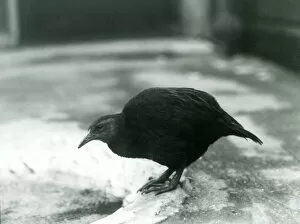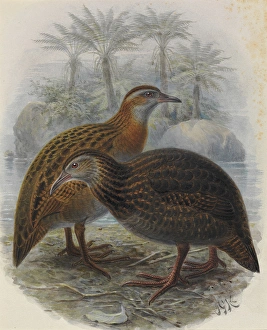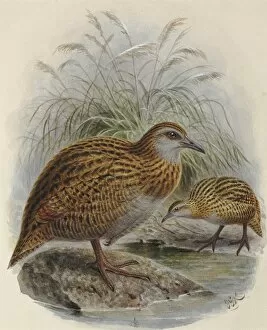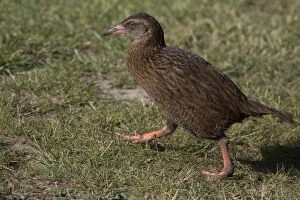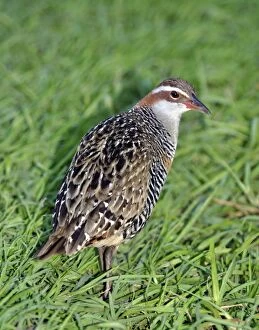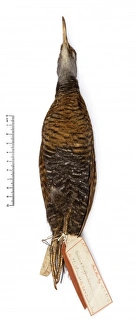Gallirallus Collection
"Gallirallus: A Fascinating Family of Flightless Rails" The Gallirallus genus encompasses a diverse group of flightless rails
All Professionally Made to Order for Quick Shipping
"Gallirallus: A Fascinating Family of Flightless Rails" The Gallirallus genus encompasses a diverse group of flightless rails, known for their unique characteristics and intriguing history. One prominent member is the Gallirallus philippensis, commonly referred to as the buff-banded rail. This species, with its distinctive buff-colored bands across its body, can be found in various regions throughout Southeast Asia and the Pacific. Another notable member is the Weka Rail (Ocydromus australis), which thrived from 1851 to 1876. Captured through delicate watercolor and pencil artistry on paper during that era, this depiction showcases the beauty of this now-extinct bird. The Weka Rail was native to New Zealand and was often referred to as Maori hen or Woodhen due to its resemblance to domestic poultry. Intriguingly, even though some members of the Gallirallus genus are flightless like their distant relatives, they have adapted remarkably well in different habitats. For instance, both North Island Weka and Western Weka have managed to survive despite facing distinct challenges in their respective environments. Photographic evidence from London Zoo in 1927 reveals a captivating image of a flightless Weka captured in black and white. This snapshot offers us a glimpse into how these birds were exhibited for public admiration at that time. Amongst these fascinating rails is also Dieffenbach's rail (Gallirallus dieffenbachii). Named after Ernst Dieffenbach - an explorer who extensively studied New Zealand's natural history - this species holds historical significance within ornithology circles. As we delve deeper into understanding these avian wonders, it becomes evident that each species within the Gallirallus family has its own story worth exploring further. From intricate artwork capturing their essence centuries ago to photographs documenting their existence today – every piece contributes towards unraveling the mysteries surrounding these captivating flightless rails.




